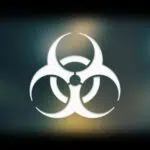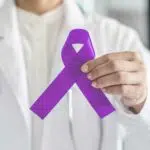We observe Bioterrorism/Disaster Education and Awareness Month every year in July. When it comes to the unexpected, whatever advantage you have over it might be your only hope of leaving uninjured, or at the very least being able to fight another day. There are many different types of disasters. We never know when calamity will come, but we always have to be prepared. Preparations have taken ahead of time, long before widespread disorder and terror seize a town, region, or beyond, boosting your odds of survival. Make a strategy for your family’s reaction.
History of Bioterrorism / Disaster Education and Awareness Month
The origins of the Bioterrorism/Disaster Reduction and Awareness Month are unknown. But one thing is certain — this month’s goal is to increase preparation awareness and educate the public in the event of a disaster. A bioterrorism assault is the intentional release of viruses, bacteria, or other agents against an adversary to cause sickness or death in humans and plants. A disaster can be either natural or artificial and inflict severe physical damage or devastation. Both are exceedingly hazardous.In reality, bioterrorism can refer to various occurrences, including chemical, biological, radiological, nuclear, and explosive disasters (or C.B.R.N.E). Chemical spills, a nuclear power plant mishap, an aerosolized biological agent, an explosion, or even a naturally occurring disease epidemic are all C.B.R.N.E incidents. Mother Nature has a role in the majority of disasters. Whether you are dealing with the heavy rains and high-sustained winds of a hurricane or the out-of-control devastation of a wildfire, one reality remains constant — you have the power to be prepared.Let us not forget that bioterrorism has happened in the United States. Some instances are the anthrax incidents in 2001, which had the entire country on edge and terrified. More recently, during one of his tenure, President Obama and numerous U.S. Senators received mail poisoned with Ricin. While bioterrorism attempts within the country have been confined and efficiently suppressed, the psychological impact of the prospect and beginning of bioterrorism has the potential to cripple the entire country. The threat of bioterrorism is serious and ever-present.
Bioterrorism / Disaster Education and Awareness Month timeline
The German Army creates anthrax, glanders, cholera, and a wheat fungus expressly for use as biological weapons during World War I.
President Jimmy Carter establishes the organization through an Executive Order to manage any calamity that strikes the United States.
After the 9/11 attack, the Anthrax case becomes one of the worst bioterrorism catastrophes in the United States, with five Americans killed and 17 sickened.
The COVID-19 pandemic, commonly known as the coronavirus pandemic, strikes the whole world causing severe acute respiratory difficulties resulting in millions of deaths.
Bioterrorism / Disaster Education and Awareness Month FAQs
In which year did the United States face serious biological threats?
Letters spiked with anthrax began circulating in the United States mail shortly after the 9/11 terrorist attacks. In what became the deadliest biological assault in U.S. history, five Americans were murdered, and 17 were sickened.
What exactly is a biological disaster?
Biological catastrophes are natural events involving widespread sickness, impairment, or death among humans, animals, and plants due to microorganisms such as bacteria, viruses, or poisons.
How would you deal with a biological threat?
Put on clean clothing after washing yourself with soap and water. Contact the authorities and seek medical attention. You may be recommended to isolate yourself or perhaps quarantine. If your symptoms resemble those listed and you are in the risk category, get emergency medical assistance immediately.
How to Observe Bioterrorism / Disaster Education and Awareness Month
-
Prepare an emergency supply kit
Most of the time, local health care providers will notice a trend of uncommon disease or a surge of sick persons requiring emergency medical assistance. The easiest thing to do is to prepare an emergency supply for your family.
-
Wear a face mask to limit GEM inhalation
In the case of a biological assault, public health experts may not be able to give rapid advice on what to do. If the first signs of an assault appear, you should use a face mask to avoid inhaling or spreading the gaseous elemental mercury (GEM).
-
Spread awareness
Raise preparation awareness and educate the public in the event of a disaster using social media. Use the hashtag #BioterrorismAwarenessMonth to share your findings.
5 Facts About Bioterrorism/Disasters
-
Number one cause of death
For the past 20 years, heart disease has been the leading cause of mortality worldwide.
-
An entire year without summer
In 1816, volcanic dust from an Indonesian eruption traveled so far that its effects reached Canada and the United States, resulting in an extremely severe winter and widespread starvation.
-
The number one deadliest plague
Almost half of Europe was slain by the ‘Black Death.’
-
Influenza pandemic H1N1
The first pandemic of the 21st century occurred between 2009 and 2010 and was caused by the influenza A(H1N1) virus.
-
Biological weapons were often used in war
During the Sino-Japanese War, between 1937 and 1945, a unit of the Imperial Japanese Army experimented on thousands of Chinese people, testing biological weapons on Chinese troops and civilians.
Why Bioterrorism / Disaster Education and Awareness Month is Important
-
It ultimately boils down to saving lives and property
The goal of Bioterrorism/Disaster Education and Awareness Month is to protect people by providing them with the materials and skills they need to defend themselves. We would lose fewer lives if more people understood what to do in the event of a biological attack. You are a true hero for preparing yourself and your loved ones.
-
To learn from the consequences of previous disasters
We may learn from past disasters all year, but dedicating a day to thinking about ways to lessen the risk of disaster can truly make a difference. This will also enhance the level of response in an emergency.
-
Raising worldwide awareness
When someone gains information, it becomes their societal obligation to share it with their society. In this manner, an increasing number of individuals may study and be prepared to deal with a biological attack.
Bioterrorism / Disaster Education and Awareness Month dates
| Year | Date | Day |
|---|---|---|
| 2023 | July 1 | Saturday |
| 2024 | July 1 | Monday |
| 2025 | July 1 | Tuesday |
| 2026 | July 1 | Wednesday |
| 2027 | July 1 | Thursday |

































































































